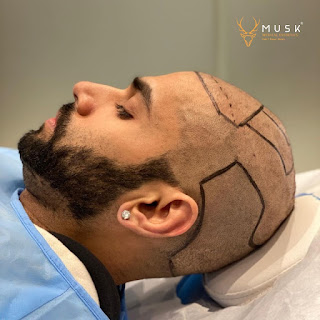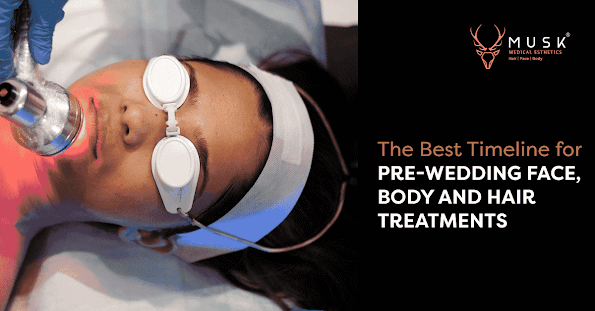Combination Modalities To Treat Acne Scars
There are many treatments available in the medical world, but treating acne scars is quite challenging these days. This is not because of cost and other barriers, but because of the limitation of treatment modalities.
In order to treat a patient with acne scars, the surgeon must make a pre-procedure plan that mentions the type of acne scars, the skin type, what acne procedure they will choose, and even the surgeon must remove the after-effects. treatments and things to avoid.
Scroll down to read more about combined modalities for treating acne scars and details on how it works.
What causes acne scars?
Acne scars are the result of inflamed acne lesions. When these acne lesions burst, they leave behind acne scars.
It has different types which can be classified as glacier scars, rolling scars, box scars, combined scars etc.
Treatment of acne and acne scars can be treated with combined modalities. Combination therapy works best on acne scars.
The most recommended treatment for acne scars is:-
- Laser skin resurfacing
- Vampire face
- Chemical peeling
- Smooth PDO threads
- Dermal fillers
At Musk, we believe in using combination methods to treat acne scars because we have seen better and faster results.
Types of acne scar treatments:
1. Laser skin resurfacing
During this treatment, laser lights were used to remove or reduce the appearance of acne scars. It supports the production of skin cells and collagen, resulting in younger and healthier-looking skin.
Commonly used lasers are:
- CO2 lasers (carbon dioxide)
- Erbium (Er: YAG) lasers
- Pulsed dye lasers
- Fractional lasers
- IPL (intense pulsed light)
To treat acne scars, we mainly use the Erbium Yag laser, which is a non-invasive fractional Erbium Yag laser. It is a highly effective fractional ablative laser skin treatment that uses a wavelength of 2940 nm.
It helps reduce the depth of acne scars, improves skin texture and reduces acne scars.
Accelerated re-epithelialization occurs, enabling faster healing and tissue regeneration.
How does the scar laser work?
First, heat the laser targets to remove the dead layer and epidermis, this layer then peels off and the skin appears smoother afterwards. This in turn reduces the appearance of scarring on the face.
The skin will be pink on the day of the treatment, it will darken from the 2nd day and it will peel in the following days. Collagen is induced in the dermal layer, which continues for another 3-4 weeks. So the final result will be seen between 3-4 weeks.
Post-laser skin care:
- If you have a burning or stinging sensation, use a cold compress
- Use the moisturizer 3-4 times a day for 5-7 days.
- Use a double layer of sunscreen at least a week before going out in the sun.
- Avoid using retinol cream for a week.
- Do not undergo any salon treatments for a week
- For better results, we recommend 4-6 sessions 1 month apart.
2. Vampire face
A vampire facial is also known as a microneedling facial. During this procedure, a platelet is used that is taken from your own blood. These platelets are a concentration of growth factors that promote wound and tissue healing.
The Vampire Facial is a combination of two treatments:-
Platelet Rich Plasma (PRP)
Microneedling
Platelet-rich plasma
It is the concentration of plasma protein obtained from whole blood and separated into individual red blood cells. . The growth factors of this plasma are keratinocyte growth factor (KGF), fibroblast growth factors (FGF), epidermal growth factors (EGF), transforming growth factor beta1 (TGF-B), etc.
Microneedling
It is a minimally invasive treatment that consists of pricking the skin with tiny sterilized needles. This procedure will make your skin more collagen and elastin, which will help you look younger.
Method:
We will take 18 ml of blood, which is the same amount of blood you will give for the blood test. It is then placed in a test tube inside a centrifuge.
Centrifugation spins the blood in a test tube at a very high speed. So then they separate the plasma containing the platelets.
Local anesthesia is applied to the relevant areas to avoid any discomfort during the injection or the creation of micro channels on the face.
Platelet-rich plasma is then aspirated and injected into the skin along with microneedling
Slight swelling and redness may occur, which will disappear in 24-48 hours.
Skin care after the procedure:
- Wear at least SPF 30 and reapply every 4 hours.
- Avoid retinol and any active ingredients for 48 hours.
- Wash your face after 8-10 hours with water only.
- Avoid exercise for at least 24 hours.
- For better results, take 3-6 sessions.
3. Professional peelings
This peeling procedure is intended for the treatment of superficial scars. It helps in exfoliating and rejuvenating the skin; it also helps lighten your dark spots and unclog clogged pores to prevent future breakouts.
Chemical peeling can be of different types such as:
- Salicylic acid
- Lactic acid
- Glycolic acid
- Retinol
- AHA Kocic peeling
- The choice of chemical peels depends on your skin type:
- Peeling with salicylic acid is used for oily, congested and acne-prone skin.
- Retinol is also used to improve acne scars, fine lines and wrinkles.
- The lactic acid peel treats basic skin rejuvenation and gives it an instant glow and evens out skin tone.
- AHA kojic peeling helps balance the skin and rejuvenate the skin.
- Skin care after the procedure:
- Avoid direct sunlight and always apply sunscreen.
- Always dry your face and do not scrub your face.
- use clean water to rinse your face for at least 24 hours.
- There will be some peeling of the skin, so do not peel it off by hand.
- Do not undergo any salon treatments for a week.
4. Smooth PDO threads
PDO treatment is highly effective for reducing acne scars (new treatment modalities).
During this treatment, smooth threads are placed in the dermal layer of the skin to create a mesh. Which helps in promoting collagen formation and increases the smoothness of the skin.
Method:
- To avoid any discomfort during the procedure, a local anesthetic cream is applied.
- The threads are placed in the dermal layer of the skin.
- Temporary swelling may occur, which settles in 12-24 hours.
- It can be combined with subcision.
- Skin care after the procedure:
- Do not touch your face for 24 hours
- Avoid makeup for 24 hours
- Wash your face with clean filtered water for 2-3 days
- For better results, it is used in combined therapy.
4. Dermal fillers
Hyaluronic acid is best prescribed to fill certain types of acne scars, as it is considered an advanced treatment modality that helps improve acne scars.
Method:
- Local anesthesia is used to reduce any discomfort during the procedure
- Hyaluronic acid fillers are inserted with a very small needle directly into acne scars.
- The area is massaged and antibiotic ointment is applied.
- Slight bruising and swelling may occur and may last up to a week
Skin care after the procedure:
- Avoid massaging your face for 3-5 days
- Avoid makeup for 48 hours
- Drink 2-3 liters of water for better hydration
- All dermal fillers temporarily last up to 2 years depending on the type of filler, sometimes you may require maintenance to achieve the best result.
Conclusion
How to remove acne scars is a major concern of acne sufferers.
The right combination of therapy will help you achieve the best results. If you have any further questions, you can contact us at Musk Clinic.




Comments
Post a Comment